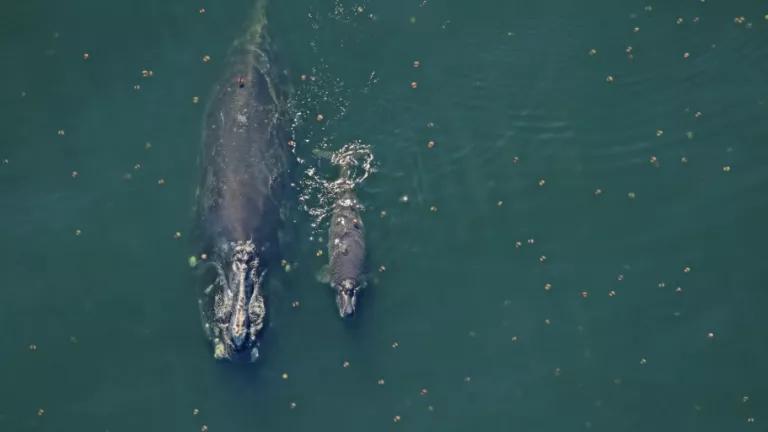
Over the past few weeks, something exciting has been happening. Every day, whale lovers, environmentalists, scientists, and people who live and work along the East Coast watch and wait. Most days, nothing happens. But some days, we get lucky. Some days, our phones and email light up with the news:
A new North Atlantic right whale calf!
One! Near the St. John’s river entrance off Florida’s coast just before New Year’s Eve.
Two! A mom and calf just beyond the surf in South Ponte Vedra Beach, Florida, on January 13th.
Three! With her mom, #1204, sighted by the Florida Fish & Wildlife Conservation Commission on January 17th. #1204 was first sighted in 1982 in Massachusetts Bay, so she is at least 37 years old. She’s also one of the most prolific moms of the population, giving birth to her first documented calf in 1988 and the calf spotted this year is her ninth!
Four! Spotted by an aerial survey team with the Florida Fish and Wildlife Conservation Commission spotted on January 25th off Jekyll Island, Georgia. The mother is nicknamed Boomerang for a scar on her fluke. Boomerang has given birth to at least four calves in her lifetime, the last during the 2014-2015 calving season.
Five! Spotted on February 5th, this time to a brand-new mom.
Six! Off Flagler Beach, Florida. The mom, known as catalog #3370, was last seen on New Year’s Day with Boomerang. Since then, they’ve both delivered healthy babies.
Lucky number seven! Spotted on Valentine’s Day off St. Catherine’s Island, Georgia, to second-time mom, Pio.
The Florida Fish and Wildlife Service has posted photos of the new calves and their mothers. They can be viewed here.
Why is this so important? There are no more than 411 North Atlantic right whales left and less than a quarter are reproductively active females. No calves were born during the previous calving season and at least 20 whales have been killed in the last two years because of entanglement in fishing gear or collisions with ships.
At the current rate of decline, we may lose our iconic East Coast whale within our lifetimes.
Every calf is precious. The seven born so far this year offer an emblem of hope that North Atlantic right whales can bounce back if given the chance.
We need to give them that chance. If we don’t take immediate action to end entanglement in fishing gear, reduce the risk of vessel collisions, and minimize all other potential stressors, the right whale will go extinct. One of only five calves born the during the 2016-2017 season has already been found dead bearing scars consistent with a vessel strike. We now need to do everything we can to protect these calves and their parents.
NRDC is working to protect the North Atlantic right whale by advocating for new ropeless fishing technologies that could virtually eliminate entanglement in the fisheries primarily responsible for right whale deaths. We are also protecting right whales from noise and increased vessel collision risk associated with offshore wind development, and we are fighting to stop seismic testing in the Atlantic.
It’s important to us that you, our supporters, are fully informed on our work to protect this endangered species. We are very excited to launch #NRDCWhaleWatch on social media, to keep you up to date on our latest advocacy activities, science and policy developments, and actions that you can take to help protect the North Atlantic right whale for generations to come.
Please look for #NRDCWhaleWatch on Instagram and Twitter for the very latest!

